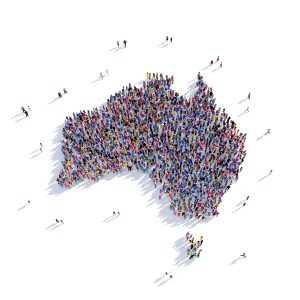Last week the Australian federal government held a Skills and Jobs Summit designed to bring together a range of sectors to understand and address the key economic issues in the country. The summit may have directly been about creating employment, promoting wage growth, and understanding how to build the next generation of skilled professionals, but it was more broadly about Australia’s overall capabilities: What are the things Australia needs to be doing, and what are the mechanisms that can help it achieve these goals.
At present Australia has the “good problem” of an unemployment rate of just 3.4 percent. This is a near-50-year low. Yet a recent report by the OECD has Australia second only to Canada among OECD countries in its shortage of labor. A shortage of labor can drive wage growth, as businesses need to create greater incentives to attract talent, but it also prevents the country from being able to produce the things it requires, and critically, prevents the country from expanding its skills base to create new industries.
In response to this shortage of labor the government has announced some immediate initiatives designed to allow for greater participation in the workforce, like older Australians being able to work more hours without it affecting their government pensions, and relaxing work restrictions for international students. Yet it is the medium objectives that are most important: an additional 180,000 free admissions to vocational training and increasing the annual immigration intake from 160,000 people to 195,000.
The government has understood that importing skills from overseas and enhancing the skills of those already in the country is not an either/or proposition. Australia should be doing both.
The increase in the immigration intake has also been supplemented with additional funding to speed up visa processing. When the Labor Party government took office in May there was a backlog of close to 1 million visa applications. Australia has a notoriously laborious visa regime that includes often absurdly high fees and lengthy processing times. People often have to wait years for decisions to be made, limiting their ability to plan their lives effectively, and preventing Australia from being able to take advantage of their skill-sets. Even a visa like the Temporary Skills Shortage visa can often take a year to process, undermining its whole purpose to bring essential labor into the country quickly.
With birth rates in wealthy countries like Australia below the rate of replacement, there is an increasingly intense competition to attract skills from overseas. Canada, a direct competitor to Australia for these skills, has double the immigration intake and visa fees that are considerably less. Paying attention to its primary competitors and responding accordingly should be considered a priority for Canberra.
At present the price point for Australian visas indicates that Australia believes it is selling something that other countries don’t have; that as a lifestyle superpower the rest of the world is clambering to get into the country and will pay anything that is asked of them to do so. It’s an incredibly self-centered view Australia has of itself, and one that if maintained through difficult application processes, high fees, and long wait times may end up deterring people instead.
At the Jobs and Skills Summit, Immigration Minister Andrew Giles rightly stated that immigration is about nation building. Current skills shortages may be the most pressing problem, but there is also the problem of Australia’s lack of economic complexity compared to its OECD peers. Australia needs to find both the skills and the will to shift its economy away from just digging stuff up and shipping it overseas. This is not just about diversifying what the country produces, but about creating greater resilience to major global shocks.
We are entering into a far more turbulent period of global affairs than the past few decades, and Australia’s position in the world has become far more complex. Its largest trading partner, China, is an often hostile adversary, and its primary security partner, the United States, is in a profound state of existential stress – something that should be considered Australia’s primary foreign policy dilemma. A smaller, less capable Australia makes these problems more difficult to negotiate.
Enhancing the skills and opportunities for each individual person in Australia – as well as those who wish to make Australia their home – is the bedrock on which Australia’s security is built.

































